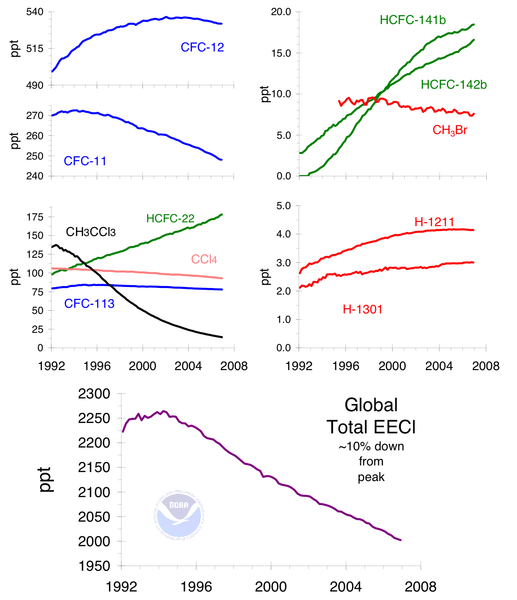Fichier:Ozone cfc trends.png

Taille de cet aperçu : 517 × 600 pixels. Autres résolutions : 207 × 240 pixels | 414 × 480 pixels | 662 × 768 pixels | 1 096 × 1 271 pixels.
Fichier d’origine (1 096 × 1 271 pixels, taille du fichier : 123 kio, type MIME : image/png)
Historique du fichier
Cliquer sur une date et heure pour voir le fichier tel qu'il était à ce moment-là.
| Date et heure | Vignette | Dimensions | Utilisateur | Commentaire | |
|---|---|---|---|---|---|
| actuel | 3 octobre 2016 à 00:00 |  | 1 096 × 1 271 (123 kio) | Cmdrjameson | Compressed with pngout. Reduced by 46kB (27% decrease). |
| 6 octobre 2009 à 06:11 |  | 1 096 × 1 271 (169 kio) | Robert Skyhawk | Updated information current to 2008. Upload requested by English Wikipedia user Tobus2 via Images for Upload. | |
| 15 janvier 2006 à 21:38 |  | 1 139 × 1 577 (24 kio) | Maksim | La bildo estas kopiita de wikipedia:en. La originala priskribo estas: CFC gas trends and equivalent chlorine effect. Combined chlorine and bromine in the lower stratosphere (10-25 km), where most ozone loss occurs, leveled off around [ |
Utilisation du fichier
La page suivante utilise ce fichier :
Usage global du fichier
Les autres wikis suivants utilisent ce fichier :
- Utilisation sur bg.wikipedia.org
- Utilisation sur ca.wikipedia.org
- Utilisation sur el.wikipedia.org
- Utilisation sur en.wikipedia.org
- Utilisation sur eo.wikipedia.org
- Utilisation sur es.wikipedia.org
- Utilisation sur eu.wikipedia.org
- Utilisation sur fi.wikipedia.org
- Utilisation sur gu.wikipedia.org
- Utilisation sur hi.wikipedia.org
- Utilisation sur id.wikipedia.org
- Utilisation sur kn.wikipedia.org
- Utilisation sur pt.wikipedia.org
- Utilisation sur simple.wikipedia.org
- Utilisation sur ta.wikipedia.org
- Utilisation sur zh.wikipedia.org


